

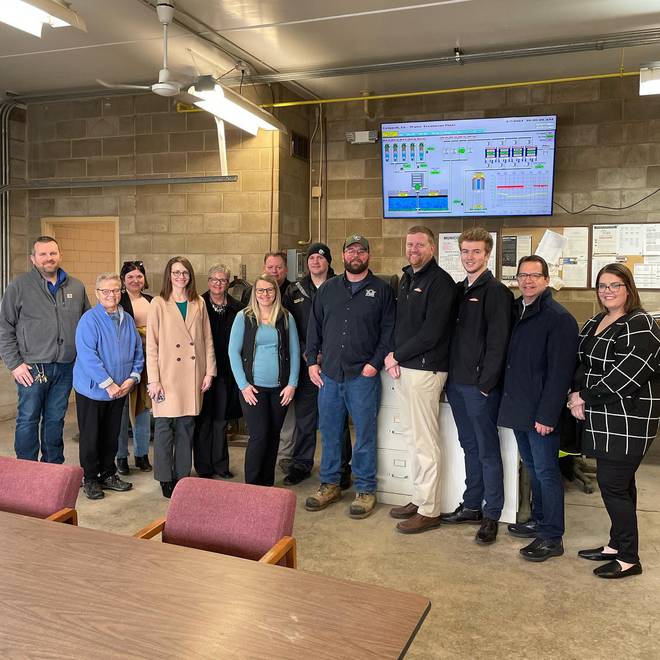
Ambassadors recently visited the Grinnell Water Treatment Plant. We’ve been hearing a lot of feedback about the city’s water quality and in particular, the softening system. Our visit was incredibly insightful and while soft water is very important from a quality of life perspective, it’s one of many critical issues that also need to be addressed at the water treatment plant. We’ll touch on the status of the softening system along with more information about the other updates planned.
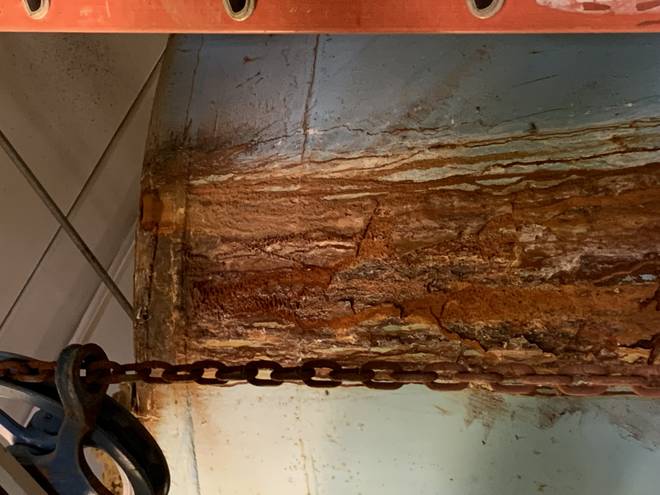 Softener Status
Softener Status
Like many communities across the country, the City of Grinnell’s water treatment infrastructure is well past its prime. According to Water Department Director Jordon Altenhofen, there are no physical records that date the specific building of the current water plant but estimates put it at 80+ years old and its most recent upgrades were done in the 1990s. The Water Treatment facility utilizes zeolite softening primarily for hardness removal. This system is similar to your home water softener but on a much bigger scale. The steel tanks pictured are where the water and salt mix before it goes through the chemical treatment process. Grinnell’s facility has limited treated water storage (more on this tomorrow) so the tanks, when in use, also worked as limited additional capacity for our system. To do this, they were constantly full and under increased pressure. Salt water and steel don’t mix well, so repairs have been made over the years until recently. The quality of the steel has deteriorated to the point where patches can no longer be made. The softeners were taken offline in the Spring of 2022. It’s important to note that Grinnell’s water, while hard, is still safe to drink. The water is still being chemically treated before it arrives to residents.
So why not replace it? To replace the current tanks would cost in the millions. Our zeolite system is no longer the standard recommended practice for community water softening. The used salt water in the backwashing process inevitably makes its way to the wastewater system and ultimately put back into the environment. Should we continue to use the current softening system at the same levels of salt, we would be required to make additional updates to the wastewater plant to remove chlorides. Grinnell had budgeted to spend $238,000 on salt for FY ‘23, this money will instead be put towards improvements in the 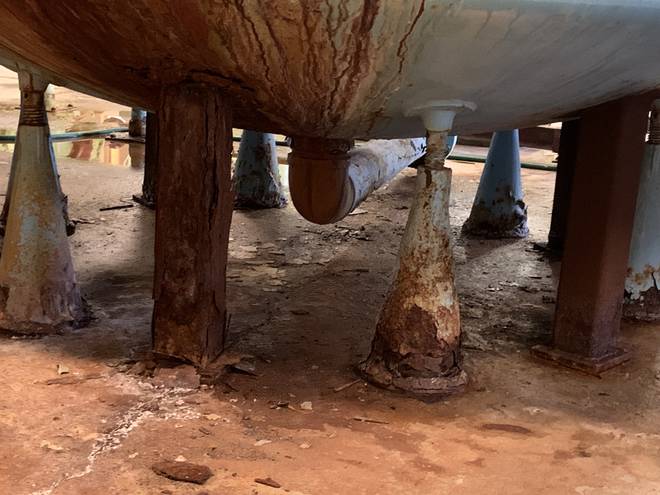 distribution systems. The City is looking to replace our current system with Membrane Treatment Technology. The new membrane system will also assist in the removal of more constituents like Gross Alpha Particles, Radium, Ammonia and others which are naturally occurring in the water pulled from our water source, the Jordan Aquifer. Once the new plant is online, it will produce high quality water that it will likely negate the need for in-home systems.
distribution systems. The City is looking to replace our current system with Membrane Treatment Technology. The new membrane system will also assist in the removal of more constituents like Gross Alpha Particles, Radium, Ammonia and others which are naturally occurring in the water pulled from our water source, the Jordan Aquifer. Once the new plant is online, it will produce high quality water that it will likely negate the need for in-home systems.
The City of Grinnell is working with McClure Engineering to study the community needs, develop a plan and design a new water treatment plant. Preliminary studies are being finalized and an initial plan will be presented to council in the near future. The current goal is to have the new plant on-line in 2026. Spending millions to do a temporary patch on existing, worn out equipment that will ultimately be rendered unusable is not recommended. Instead, the city will continue to operate with the softeners offline and will be putting its resources towards new water infrastructure for the City of Grinnell.
Capacity Issues
As mentioned above, Grinnell has limited capacity to store treated water. The Grinnell water tower was built in 1926 and holds 300,000 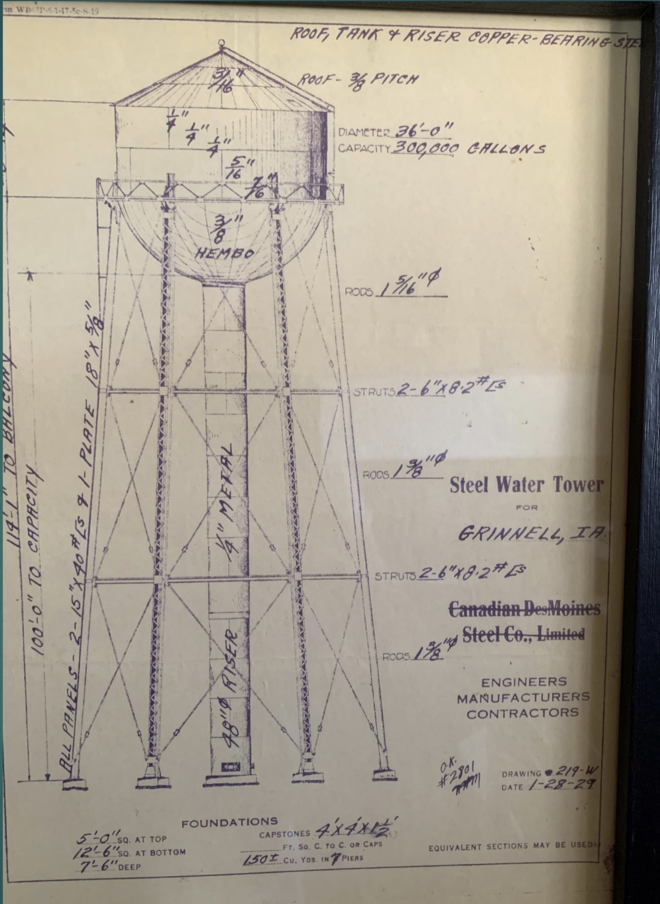 gallons of treated water. Grinnell uses, on average, 1.2 million gallons of water per day. The Iowa DNR recommends that cities be able to hold enough treated water to service community needs for 24 hours. If you do the math, that means Grinnell currently has enough storage to hold roughly 6 hours of water for the town, should the plant ever need to be taken offline. We’ll address one of the reasons the plant may need to come offline in Saturday's post.
gallons of treated water. Grinnell uses, on average, 1.2 million gallons of water per day. The Iowa DNR recommends that cities be able to hold enough treated water to service community needs for 24 hours. If you do the math, that means Grinnell currently has enough storage to hold roughly 6 hours of water for the town, should the plant ever need to be taken offline. We’ll address one of the reasons the plant may need to come offline in Saturday's post.
As part of the new water treatment plant plans, the city is planning to build a new water tower on the south side of town. Current designs for the new tower estimate it will hold 1 million gallons of treated water. The new plant will also have additional on-site storage of 0.3 million gallons. Those 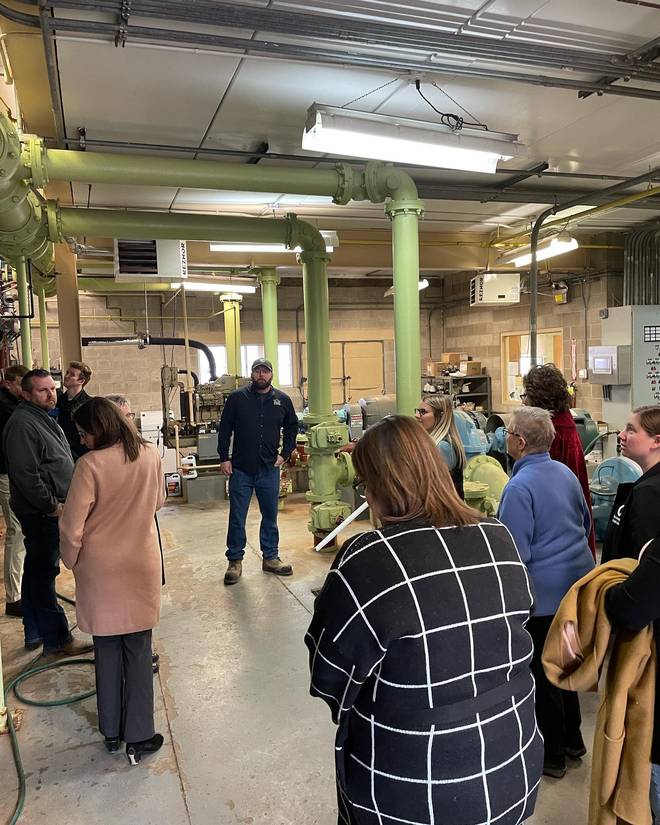 two, paired with the existing tower which holds 0.3 million gallons, equal a grand total of 1.6 million gallons of stored, treated water. This puts us above the DNR recommendation and allows for business and residential growth of the community.
two, paired with the existing tower which holds 0.3 million gallons, equal a grand total of 1.6 million gallons of stored, treated water. This puts us above the DNR recommendation and allows for business and residential growth of the community.
When Grinnell lost power for a week after the derecho, the water treatment plant did not have a whole building generator that allowed them to continue operations of the entire facility. Instead, they utilized a Cummins diesel engine that was used to supply one of the pumps with rotation. This process must be manually monitored by staff but does get the water from the wells into the lines to be treated. A second Honda generator then powered the chemical feed pumps to treat the water before it was pushed out into the service lines. While this system does work, it is certainly not ideal. The new plant will have a better power backup system that will allow for more automation and supply the entire facility with power in the event the plant loses access to its main power supply again.
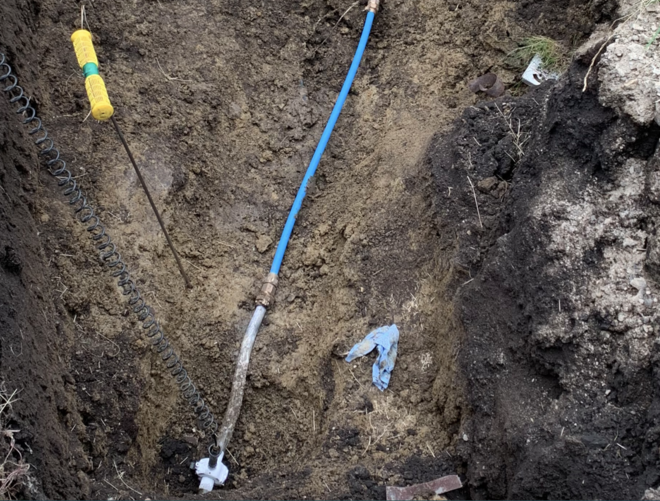 Lead Line Problems
Lead Line Problems
Another key piece of the water process is getting treated water to businesses and residents. Grinnell has 65 miles of water service lines! Approximately 17 miles of this was built in 1930 or before, with some systems dating pre-1900s. Grinnell has just shy of 500 fire hydrants, 1,300 main valves and around 3,300 home/business connections. Based on records, the city knows that at minimum 30% of the home/business connections are still lead lines. Their staff estimates that the actual number is closer to 50%. After the Flint, Michigan’s water crisis, the EPA is updating their standards and is phasing out the use of lead water lines. A new ordinance has been introduced to the city’s code that would require the replacement of any lead service lines in the event of a leak or break. The replacement cost for updating this infrastructure averages approximately $6,000. Important to note: the city is not requiring property owners to make updates if there is not a current issue.
To help offset the cost of replacement, Grinnell City Council recently approved an agreement with HomeServe (Service Line Warranties of America) to offer insurance to Grinnell property owners. This insurance would cost property owners around $6-7 per month and will pay for repairs per incident up to $8,500 with no deductible after 30 days from the start of the insurance. Property owners should expect to begin to see letters in the mail from HomeServe by the end of February or beginning of March. We encourage you to check with your local insurance provider to see what options may be available on your current policy.
The city has both electronic and paper records of work done to about ⅓ of properties in Grinnell over the years. If you’d like to learn more about your own property, please contact Altenhofen at 641-236-2635 or email jaltenhofen@grinnelliowa.gov.
It’s important to note that water department staff test approximately 20 water sources a year and while some lead is detected, it is under the current allowable EPA guidelines. Lead can be found in internal pipes and faucets in addition to the service line from the main to the house. If residents are interested in testing their water, Altenhofen recommended working with Keystone Labs in Newton. Tests cost $25.25 and can tell property owners if lead is present, though not its exact source. Contact Altenhoven or Keystone Labs to learn more about testing.
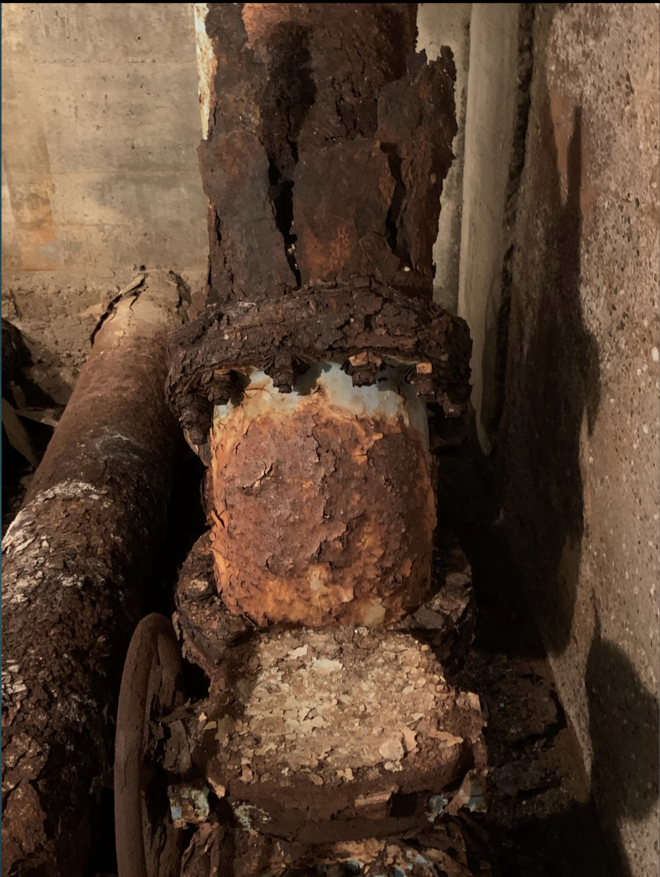 Pipe Gallery Issues
Pipe Gallery Issues
Arguably the most critical piece of infrastructure updates needed is to the pipe gallery. Pictured is the ductile, mechanical “Y” in the pipe gallery. This section of the pipe is responsible for carrying water that has been chemically treated from the water plant out into the main line distribution system through town. This is the only source of connection between the treated water and the rest of the community water lines. As you can see, the pipe is in incredibly poor condition. Should it break or leak, the water tower would inevitably drain back into the building and the water department would presumably lose its capability to operate.
To repair or replace this piece, the water treatment plant would need to be offline for multiple weeks. If you’ll remember back to Thursday’s post, Grinnell currently has about 6 hours of water on standby. Unfortunately, Grinnell happens to be located in a deadzone for other water suppliers. Rural water suppliers do not have enough pressure or flow to connect to Grinnell and fully service the community.
Altenhofen and his team have come up with an emergency by-pass connection they’re hoping to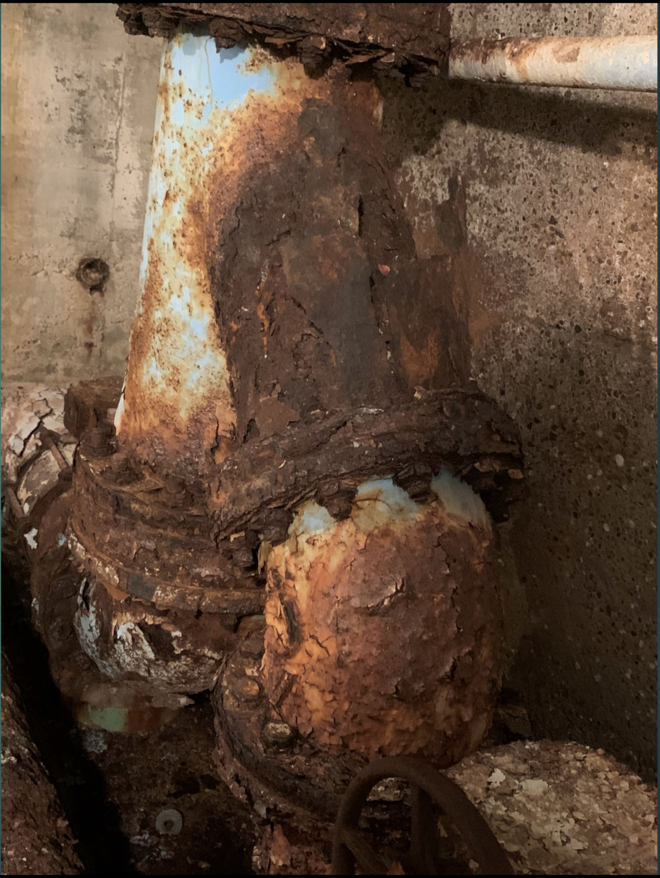 have online later this year. A small substation will be built in the parking lot south of the plant. This substation will take untreated water, treat it with chlorine, and utilize the existing wells to push the treated water into the water tower which will then go out to the rest of the community. This plan allows for the water treatment services to remain online in the event of the Y bend failure.
have online later this year. A small substation will be built in the parking lot south of the plant. This substation will take untreated water, treat it with chlorine, and utilize the existing wells to push the treated water into the water tower which will then go out to the rest of the community. This plan allows for the water treatment services to remain online in the event of the Y bend failure.
The new water treatment plan will be built on the east side of the property where the current plant is located. Once built, the current plant will not be needed. The new plant will have built in bypass systems to allow for the repair of sections if needed.
Well Information
Before we wrap up this series, we want to take a moment to say thank you to Water Department Director Jordon Altenhofen for his time 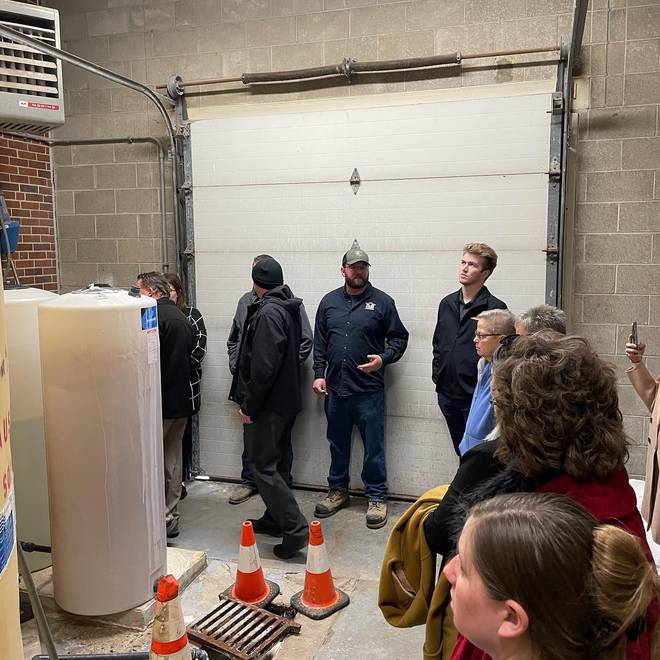 and willingness to share more information with our Chamber members and community at-large. Jordan has been in his role for almost two years and it’s safe to say he has his work cut out for him as he and his team navigate this complex work.
and willingness to share more information with our Chamber members and community at-large. Jordan has been in his role for almost two years and it’s safe to say he has his work cut out for him as he and his team navigate this complex work.
Grinnell currently has 5 wells to the Jordan Aquifer. Well 5 & 6 are about 50 feet apart and are located on the property where the plant currently sits. These wells were drilled over 100 years ago. Well 7 was drilled in the 1950s and is located by First State Bank. Well 8 was drilled in 1974 and is located on the Public Services Department property. Well 9 was drilled in 2002 and is near Lake Nyanza.
In addition to the updates we’ve already mentioned this week, the new water treatment plant will require a new well to be drilled while wells 5 & 6 would be taken offline. Well 10 is expected to be drilled on site with the new plant. The option to add an additional well near Hazelwood Cemetery is being explored, should additional community growth increase water needs.
The Iowa DNR requires new water plants to be able to service communities and their possible expanded growth for 20 years. Altenhofen estimates that Grinnell’s new plant will have enough capacity addition options that it should be able to service Grinnell for the next 50 years. The new plant (and all the pieces of infrastructure it will require) is estimated to cost north of $30 million.
City of Grinnell and McClure Engineering are reviewing the final studies and wrapping up the initial plans. We will continue to share updates from the city over the coming months.
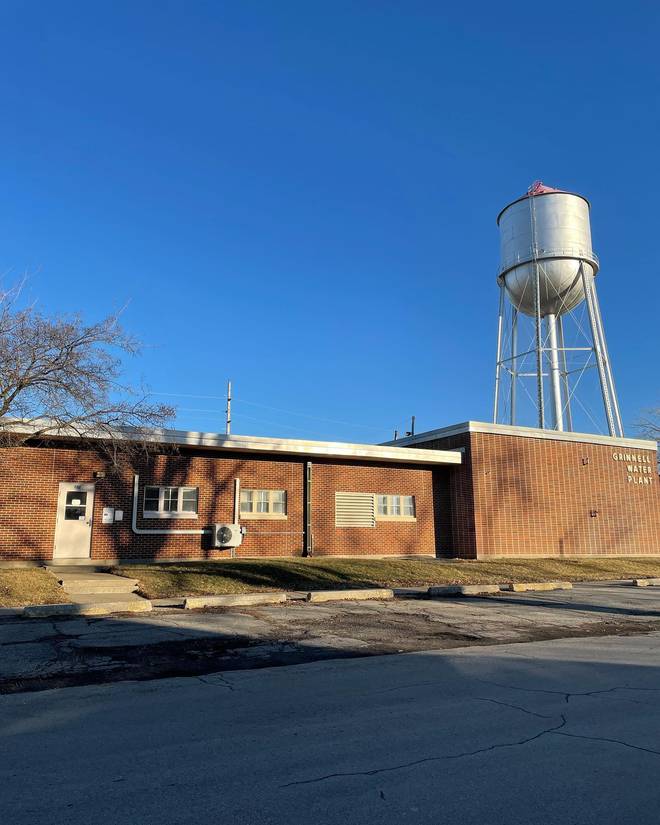
| Comments |
|
I am so pleased with the clear reporting on a. difficult subject to understand.
Jean Perrin
| 02/21/2023 9:38 AM
|